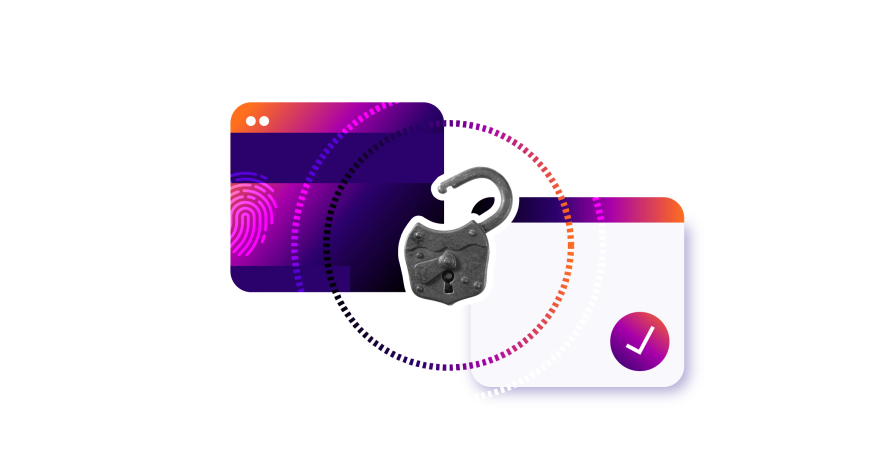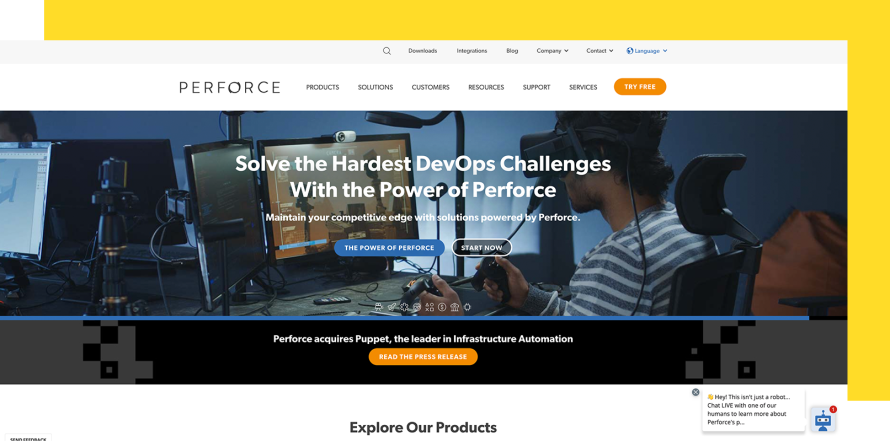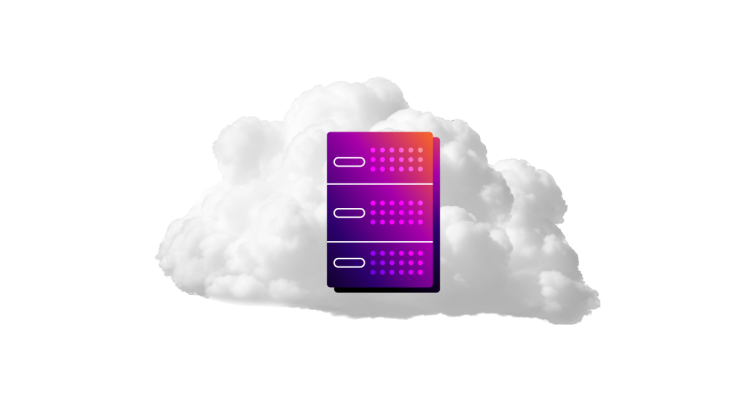Filters
Content Type
Topics
Mastering Website Security: A Complete Guide
Sensitive data, be it personal information or financial transactions, demands stringent security measures for several reasons.
First, a breach can lead to devastating consequences, both for your reputation and your wallet. Over the past two years, the median cost per ransomware incident has sharply risen to $26,000, with the range of incidents costing businesses anywhere between $1 million and $2.25 million.
Image

Second, companies are almost always required to comply with regulations such as GDPR in Europe and CCPA in California and not doing so can result in hefty fines and legal complications.
This is not an area to even contemplate cutting corners and taking a DIY approach. The consequences are just too severe. When it comes to web security, it’s vital to work with people who know what they’re doing.
Web security is essential to safeguard sensitive data, ensure uninterrupted business operations and guarantee compliance with regulatory standards. It plays an important role in enhancing your website’s search engine optimization (SEO) and visibility, as search engines are increasingly penalizing unsecured or compromised websites.
But how can any business protect its website from all the threats lurking online? From malware to phishing attacks, the complexity and volume of these threats can make web security seem like a complex challenge, especially if you're not a tech expert.
We’ve got you covered. In this article, we’ll outline the main threats to your website and provide you with actionable strategies to protect it. And there's more good news for those of you hosting your sites on Pantheon.
At Pantheon, we take security extremely seriously, implementing cutting-edge measures to ensure your site's security. By choosing us, you've already taken a significant step towards unparalleled website security.
Understanding the Landscape of Website Security Threats
As website owners or administrators, recognizing and preparing for cyber threats is crucial to maintaining the integrity, availability and confidentiality of your web presence. Here are the most common website security threats:
Cross-Site Scripting (XSS)
XSS attacks occur when attackers inject malicious scripts into the content of a reputable website. These scripts then run in the browser of anyone who visits the infected site, allowing attackers to steal cookies, session tokens or other sensitive information directly from the user's browser. The risk here is the undermining of user trust and potential theft of personal information. These attacks often depend on the templates of the Content Management System insufficiently sanitizing or "escaping" the content from users. These mistakes in templates were especially common in the Drupal community prior to Drupal 8's switch to Twig templates.
SQL Injection
This type of attack happens when an attacker uses a web form field or URL parameter to gain access to or manipulate your database. By inserting malicious SQL statements into these inputs, they can read, modify or delete sensitive information from the database. SQL injections can lead to the loss and corruption of confidential data and unauthorized access to administrative functions. Most web frameworks like Drupal and WordPress come with database abstraction layers intended to prevent the accidental possibility of SQL Injection. Still, it is too common that developers unknowingly skip these protections and make their sites vulnerable.
DoS/DDoS Attacks
Denial of Service (DoS) and Distributed Denial of Service (DDoS) attacks aim to make a website unavailable by overwhelming it with a flood of internet traffic from multiple sources. These attacks disrupt business operations and serve as a smokescreen for other malicious activities. The layer of a Content Delivery Network described below has become the most effective place to mitigate these attacks.
Malware Infections
Malware, short for malicious software, encompasses various forms of harmful software, including viruses, worms, Trojan horses and ransomware. The risks associated with malware infections include data theft, loss of customer trust and significant repair costs. Moving a website's infrastructure to immutable containers where files and software can only be changed through a deployment pipeline mitigates the risk of Malware infection.
Exploring Further Threats and Risks
While the above are the most common threats your website faces, sadly, it’s not an exhaustive list. It’s also a good practice to be aware of and prepared for the following:
- Zero-day Exploits/Vulnerability Exploits: Zero-day exploits take advantage of a security vulnerability on the same day that the vulnerability becomes generally known. There is little to no time for vulnerabilities to be patched before attacks occur. These exploits pose a significant risk because they can lead to unexpected and unprepared-for attacks, making them particularly dangerous.
- Directory Traversal: This attack exploits insufficient security validation/sanitization of user-supplied input file names so that characters representing “traverse to parent directory” are passed through to the file APIs. It allows attackers to access files and directories that are stored outside the web root folder, potentially exposing sensitive information.
- Data Breach: A data breach occurs when confidential, protected or sensitive data is accessed, disclosed without authorization or stolen. It can involve financial information, personal health information, personally identifiable information, trade secrets and intellectual property. Data breaches can have devastating consequences for businesses, including financial loss, damage to reputation and legal penalties.
- Clickjacking: Clickjacking, also known as a “UI redress attack”, tricks users into clicking on something different from what they perceive. This can potentially reveal confidential information or allow others to take control of their computer while clicking seemingly harmless web pages.
- Ransomware: Ransomware is a type of malware that encrypts a user's files, with the attacker then demanding a ransom from the victim to restore access to the data upon payment. This can lead to significant business disruption, financial loss and loss of sensitive or proprietary information.
Essential Preventative Measures and Best Practices For Website Security
It's essential to develop a comprehensive security framework that minimizes risks, regardless of the size of your site. Security is not a one-time setup but a continuous journey that demands constant vigilance and adaptation to emerging threats. This involves a proactive approach, where regular threat modeling helps in identifying potential vulnerabilities and crafting strategies to mitigate them. Let’s look at the key strategies for protecting your website:
Stay Updated
Make sure that all components of your website are up-to-date – this includes the core system, plugins, themes and any other software components. Outdated software is a leading risk factor for security breaches, as it often contains vulnerabilities that attackers can exploit.
Pantheon's Autopilot feature streamlines this process by automatically updating core and security components, allowing you to focus on what truly matters.
Pantheon does all the core and security updates for us. It’s not something we have to worry about anymore and it’s saving us money.”
– Joel Cantalamessa, Senior Digital Marketer at Vertafore
Robust Authentication Measures
Use strong passwords and two-factor authentication (2FA) to enhance your site's security significantly. As security issues become more sophisticated, the importance of creating hard-to-crack passwords cannot be overstated.
Avoid using easily guessable personal details, like your date of birth. Opt for completely random passwords, ideally longer than 12 characters and refrain from reusing passwords across different sites.
Pantheon supports security assertion markup language (SAML) integration, offering an extra layer of security through additional authentication mechanisms.
Principle of Least Privilege
Role-based access control ensures that team members have access only to the resources necessary for their job, minimizing potential entry points for attackers. If temporary elevation of privileges is required, ensure it's granted only for the duration needed and revoked immediately after. Pantheon facilitates this approach by offering role-based access control and making code write-protected in Test and Live environments, thus bolstering your site's defense mechanisms.
SSL Certificates
The use of SSL certificates encrypts the data exchanged between a user's browser and your website, safeguarding information from being intercepted by malicious actors. Websites secured with HTTPS protect user data and are favored by Google in search rankings. Pantheon ensures all sites benefit from high-grade encryption with TLS 1.3, providing a secure browsing experience for your users.
Regular Backups
Absolute security is an ideal, not a reality, so it's vital to have great backup strategies in place. If you don’t want to do these manually, Pantheon offers automatic backups, providing peace of mind that your data is safe and recoverable even in the event of a security breach.
By prioritizing these strategies, you create a resilient environment that protects your digital assets and fosters trust among your users. Pantheon's comprehensive suite of security features further reinforces this protective shield, allowing you to navigate the digital landscape with confidence and peace of mind.
How Pantheon Boosts Your Site’s Security
Dealing with the multitude of risks that threaten the sanctity of your website's security and taking actionable measures to mitigate them by yourself can be hard and expensive. That’s why, at Pantheon, we offer a comprehensive suite of features designed to protect your digital assets against all kinds of threats. Our commitment to security is evident in the advanced protection mechanisms we provide to all our customers, ensuring your peace of mind and allowing you to focus on what you do best. Here’s how:
Global Content Delivery Network (CDN)
Our Global Content Delivery Network (CDN) is a critical component in ensuring that your web servers remain unburdened by excessive traffic. This distribution of load not only enhances the performance of your site but also significantly reduces the risk of becoming a target for DDoS attacks. A smoothly running website is less likely to face downtime, thereby maintaining its integrity and availability.
Advanced Global Content Delivery Network (AGCDN)
Advanced Global Content Delivery Network (AGCDN) extends the capabilities of our standard CDN by incorporating features such as location-based blocking, redirection and IP blocklisting. These additional layers of security provide more granular control over traffic, allowing for more effective management of potential threats and enhancing your site's overall security posture.
Web Application Firewall (WAF)
Our WAF scrutinizes incoming requests to your website, rapidly applying a set of rules designed to identify and mitigate threats. This proactive defense mechanism is crucial in preserving the integrity of your site, protecting it from various forms of attacks and unauthorized access attempts.
We upgraded our security starter pack with Pantheon to have better firewalls. In the past, we had to manually block some IP addresses and keep an eye on outdated plugins, but on Pantheon, everything just works in the background. I don’t have to worry anymore and focus on development.”
– Bartłomiej Swojak, Web Product Manager at Tygodnik Powszechny
Multizone Failover
For mission-critical sites, our Multizone Failover capability ensures that your website remains operational even in the unlikely event of a zone failure. This redundancy feature is designed to provide continuous availability, ensuring that your site remains accessible to your users without interruption, thus safeguarding your online presence against unforeseen infrastructure issues.
By partnering with us at Pantheon, you're securing your website and investing in the peace of mind that comes from knowing your digital assets are protected by some of the most advanced security measures available today.
What Makes Pantheon a Secure Platform
While implementing strong security measures on your website is crucial, the inherent security of the hosting platform itself is equally important. A secure hosting environment enhances the protective measures you've already put in place.
Our Pantheon WebOps platform is designed from the ground up to be a fortress for your digital assets, offering the following unparalleled security features that keep your website safe from online threats:
- Resource Isolation: Each website hosted on our platform operates in isolated application containers. Even if one site becomes compromised, the isolation ensures that the threat does not spread to others on the same platform.
- Redundancy: Redundancy is built into Pantheon's layers of infrastructure, ensuring that your site remains online and accessible even in the face of hardware failures or other infrastructure issues. This level of redundancy enhances your site's availability and contributes to its security by providing multiple layers of fail-safes and backup options.
- Anti-Malware: Pantheon employs state-of-the-art anti-malware technologies to scan and protect your site from malicious software. Our proactive approach to malware detection and removal ensures that threats are identified and neutralized before they can do harm, providing an additional layer of cybersecurity that operates seamlessly in the background.
- Datacenter Security: The physical infrastructure of Pantheon's platform is hosted in secure Google Cloud data centers, which are equipped with advanced security features such as biometric access controls, surveillance systems and environmental protections. These data centers are staffed 24/7 by security professionals, ensuring that the physical hardware hosting your site is protected against unauthorized access and environmental threats.
- Incident Response: In the event of a security incident, Pantheon's expert security team is equipped to respond swiftly and effectively. Our comprehensive incident response plan includes identification, containment, eradication and recovery procedures, ensuring that any security risks are quickly neutralized and that your site's security is restored with minimal downtime.
- Network Security / Intrusion Prevention: Pantheon's network security infrastructure includes advanced intrusion prevention systems (IPS) that monitor network traffic for suspicious activity and automatically block potential threats and attack vectors.
Pantheon in Action: Perforce
Perforce Software, a pioneer in application development tools, grappled with issues threatening its operational stability and security. Despite its expertise in developing cutting-edge software, Perforce was plagued by frequent outages and a lack of efficient developer tools within its website operations.
Besides outages, the marketing department faced significant challenges due to bot traffic. A considerable portion of their lead generation initiatives relied on Marketo. Unfortunately, bot submissions via Marketo forms emerged as a prevalent security issue, frequently demanding the IT team's attention.
Image

However, the transition to Pantheon marked a turning point for Perforce. “Our issues were solved overnight,” attests Jeremy Pieper, Web Development Manager at Perforce.
Pantheon's Upstreams, a scalable alternative to the traditional Drupal multisite model, offered the flexibility and efficiency Perforce desperately needed. Upstreams provided an out-of-the-box solution that dramatically simplified site management and deployment processes.
Perforce’s subsequent switch to Pantheon's Advanced Global Content Delivery Network (AGCDN) from Cloudflare was a significant upgrade in security and site management capabilities. AGCDN's efficient cache-clearing mechanisms resolved long-standing frustrations related to content updates, liberating the development team from tedious manual interventions.
We didn’t switch over to Pantheon with expectations to increase site traffic. We were originally interested in metrics that would get our site stability back. We got that and so much more! The quality of life of our developer team has been substantially improved.”
– Jeremy Pieper, Web Development Manager at Perforce
Next Steps: Implementing Your Comprehensive Website Security Plan
Security threats are becoming more and more sophisticated and are also constantly growing in number, posing significant risks to websites across the globe. That’s why it's necessary to understand that website security is not a domain where improvisation or a DIY approach is advisable.
According to Verizon’s 2023 data breach investigations report, 74% of all breaches include the human element, with people being involved either via error, privilege misuse, use of stolen credentials or social engineering. The stakes are simply too high and the complexity of potential threats too great, to leave anything to chance.
This is why entrusting your website's security to professionals is not just a wise choice – it's an essential one. Pantheon is engineered with security at its core, offering a robust suite of features designed to protect your site from a wide array of vulnerabilities and attacks. From advanced global content delivery networks that mitigate the risk of DDoS attacks to state-of-the-art web application firewalls that guard against intrusion attempts, Pantheon ensures that the security of your site is not something you need to worry about constantly.
Contact us today to learn more about the security features Pantheon can provide for your site and take the first step towards a more secure online presence!


